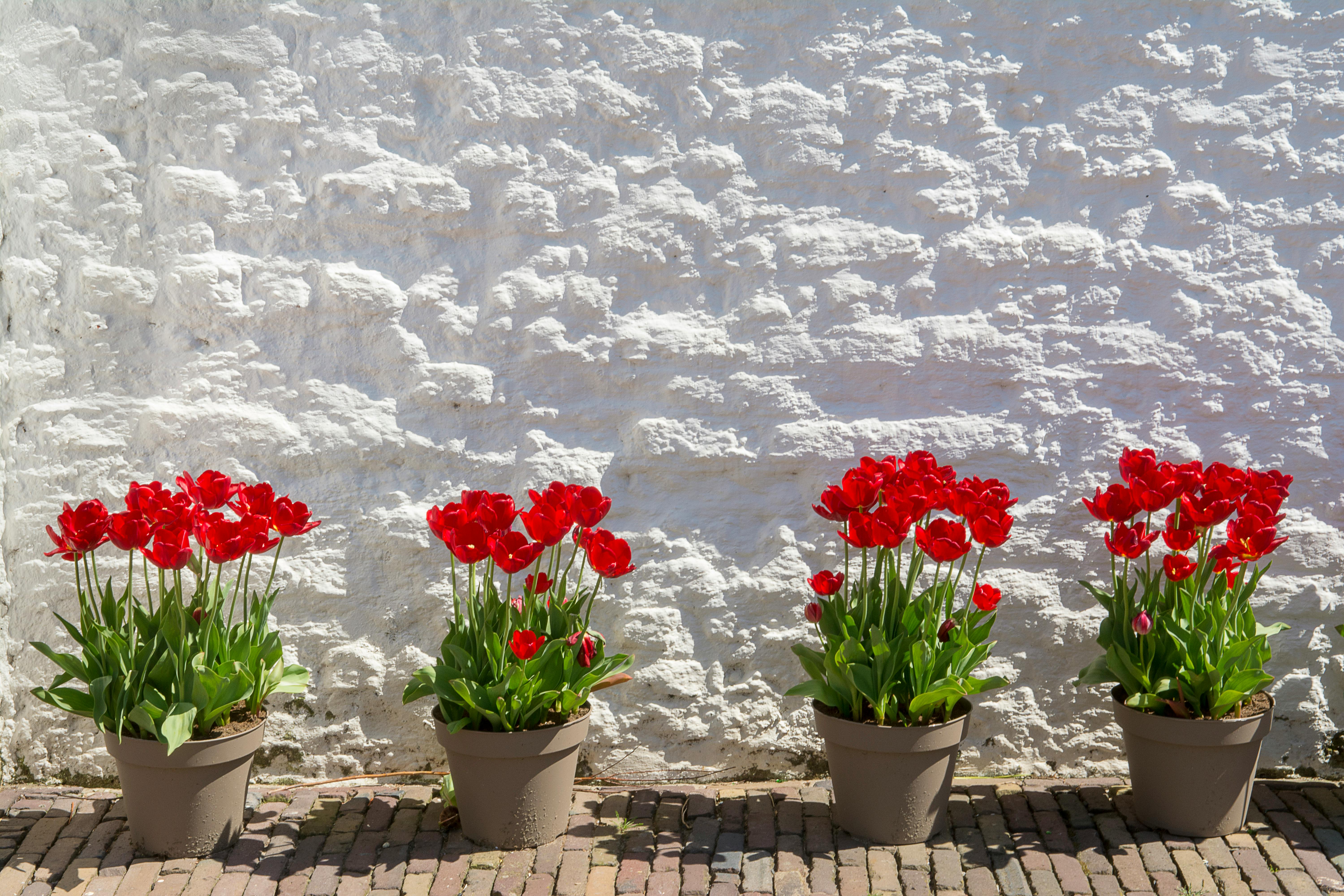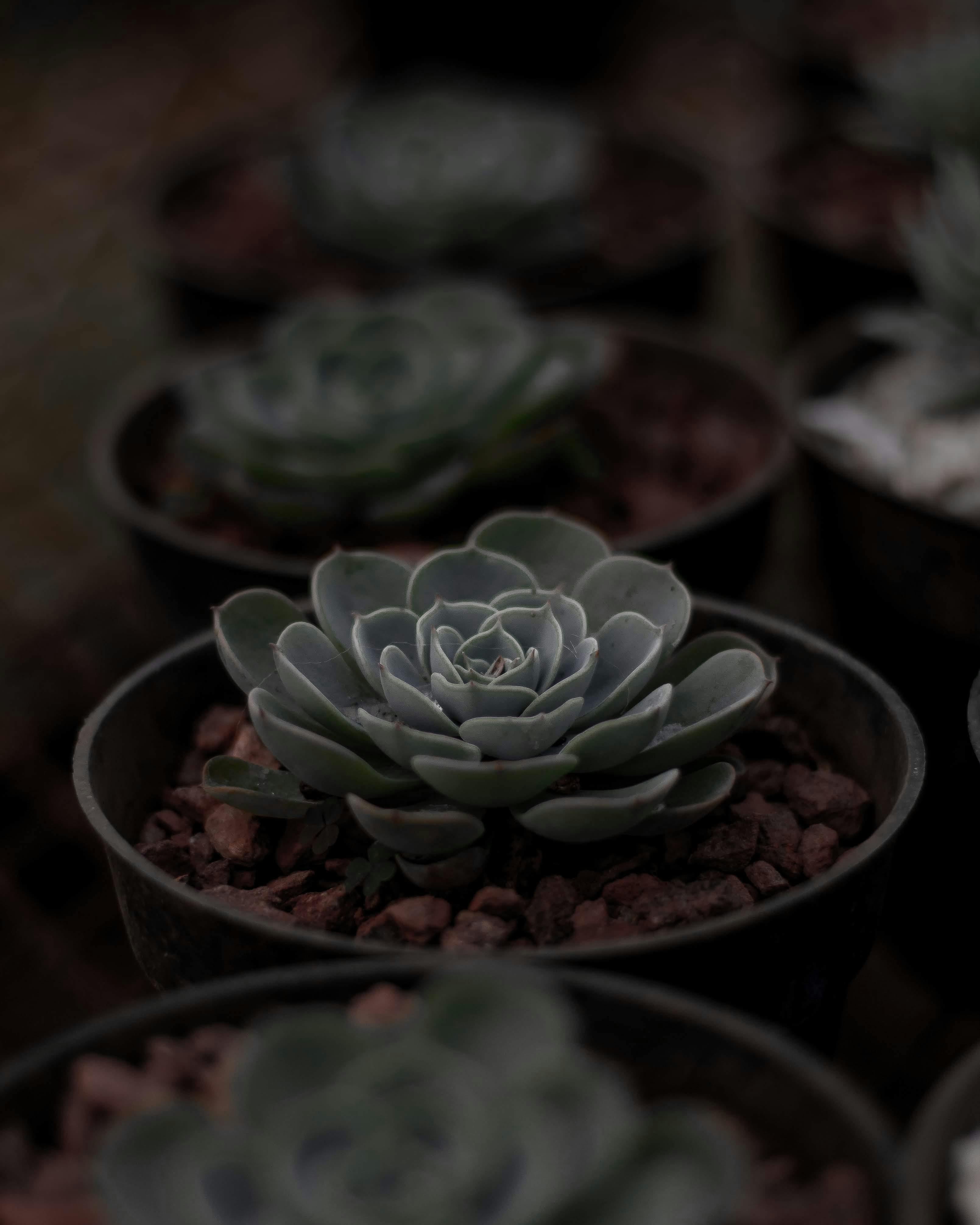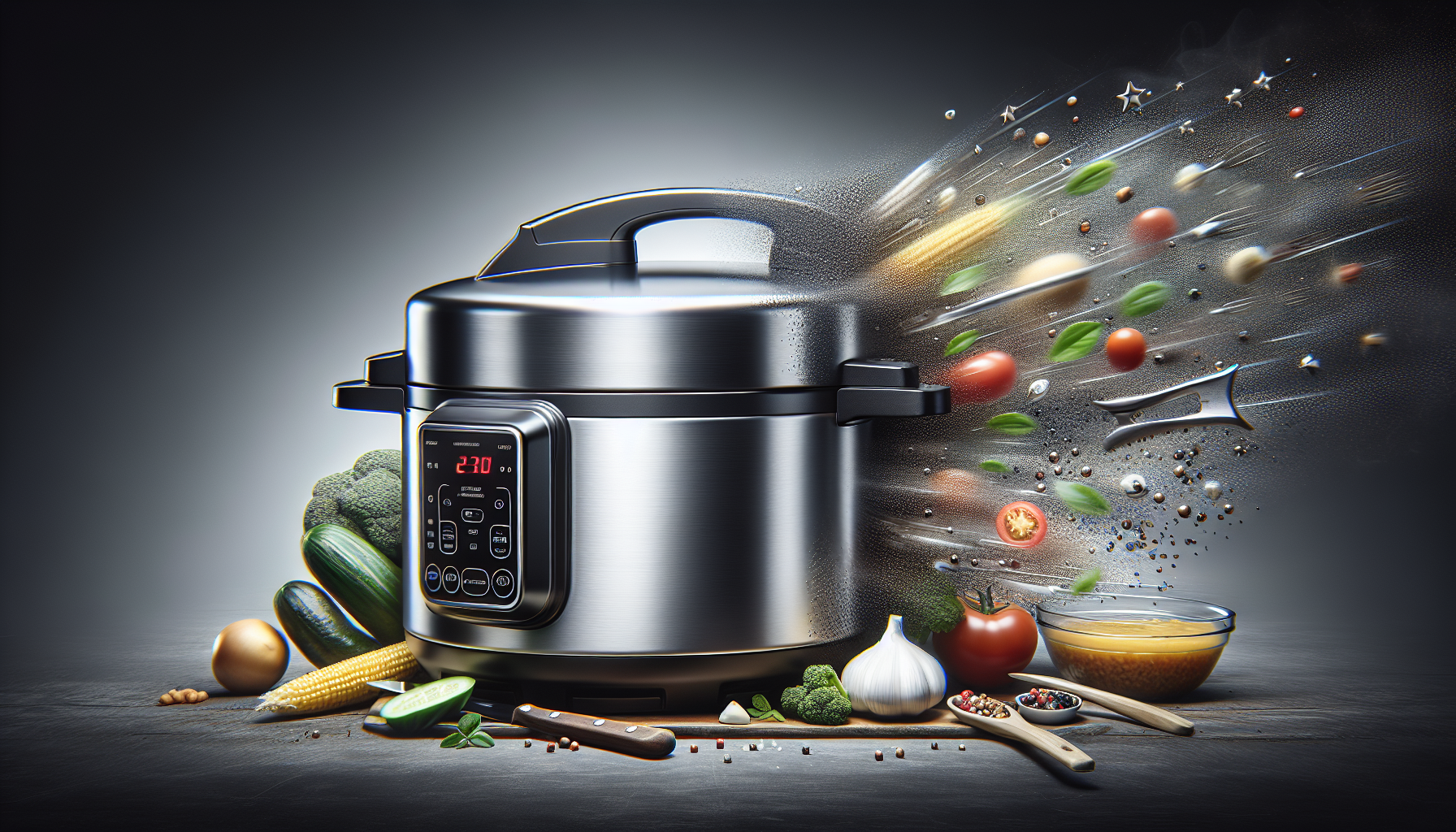If you’ve ever wondered how to cook delicious meals in a fraction of the time, then look no further. Tastepan’s expert cooking tips and techniques will help you master the art of pressure cooking. From savory stews to tender meats, pressure cooking offers a fast and flavorful way to create mouthwatering dishes. With our comprehensive guides and videos, you’ll be able to impress your friends and family with your newfound skills in the kitchen. Get ready to unlock the secrets of pressure cooking and take your culinary repertoire to new heights.

Benefits of Pressure Cooking
Saves time
Pressure cooking is known for its ability to significantly reduce cooking time compared to traditional methods. The high heat and steam created inside a pressure cooker ensure that food cooks quickly and efficiently. While it may take hours to cook certain dishes using conventional methods, pressure cooking can cut that time down to a fraction, allowing you to prepare meals in a fraction of the time.
Retains nutrients
One of the key advantages of pressure cooking is its ability to retain the nutrients in food. The shorter cooking time and the sealed environment of the pressure cooker help to preserve vitamins, minerals, and other important compounds that are often lost in other cooking methods. This means that the food you prepare in a pressure cooker will not only be delicious but also packed with nutrients.
Preserves flavors
Pressure cooking is renowned for its ability to intensify and retain the flavors of ingredients. The high pressure and steam created inside the cooker help to infuse flavors more deeply into the food, resulting in dishes that are rich, flavorful, and aromatic. Whether you’re cooking meats, vegetables, or grains, pressure cooking can take your culinary creations to the next level of taste and enjoyment.
Tenderizes tough cuts of meat
Another notable benefit of pressure cooking is its ability to tenderize tough cuts of meat. The high pressure and heat in the cooker break down the connective tissues in meat, resulting in tender and juicy dishes. What would take hours of slow cooking or braising can be achieved in a fraction of the time with a pressure cooker, making it a game-changer when it comes to preparing meats that are traditionally considered tough.
Choosing the Right Pressure Cooker
Types of pressure cookers
When it comes to choosing a pressure cooker, there are two main types to consider: stovetop pressure cookers and electric pressure cookers. Stovetop pressure cookers are placed directly on a stovetop burner, while electric pressure cookers have their own heating element and controls. Each type has its advantages and disadvantages, so it’s important to consider factors such as convenience, control, and space before making a decision.
Capacity and size considerations
Pressure cookers come in various sizes, so it’s important to choose one that suits your cooking needs. Consider the size of your household, the types of dishes you typically cook, and the space available in your kitchen when selecting a pressure cooker. A larger cooker may be suitable for batch cooking or entertaining, while a smaller cooker may be more practical for everyday use.
Safety features to look for
Safety is paramount when it comes to pressure cooking, so it’s important to choose a cooker that has the necessary safety features. Look for features such as a pressure release valve, a locking lid, and a pressure indicator to ensure that you can cook safely without the risk of accidents. Modern pressure cookers often come with advanced safety features, so it’s worth considering these when making a purchase.
Popular pressure cooker brands
There are several reputable brands that offer high-quality pressure cookers. Some of the most popular brands include Instant Pot, Fagor, Presto, and T-fal. These brands are known for their durability, performance, and safety features. It’s always a good idea to research and read reviews before investing in a pressure cooker to ensure that you choose a brand that meets your needs and expectations.

Getting Started with Pressure Cooking
Understanding pressure cooking terminology
Before diving into pressure cooking, it’s important to familiarize yourself with the terminology associated with this cooking method. Terms such as “pressure release valve,” “pressure regulator,” “natural release,” and “quick release” are commonly used in pressure cooking recipes and instructions. Understanding these terms will help you navigate the pressure cooking process with confidence.
Assembling and disassembling the pressure cooker
To get started with pressure cooking, it’s essential to know how to assemble and disassemble your pressure cooker properly. Follow the manufacturer’s instructions to ensure that you attach the lid, seals, and other components correctly. Likewise, disassemble the pressure cooker carefully after each use to clean and maintain its various parts.
Properly sealing the pressure cooker
A crucial step in pressure cooking is ensuring a proper seal between the lid and the pot. The seal is what creates the pressure necessary for cooking. Depending on the type of pressure cooker you have, this may involve aligning arrows, turning a dial, or securing clamps. It’s important to follow the specific instructions for your cooker to achieve a tight and secure seal.
Setting the pressure and cooking time
Different recipes may require different pressure levels and cooking times. Most pressure cookers allow you to adjust the pressure and cooking time based on the recipe’s requirements. Consult your recipe and follow the instructions provided to set the appropriate pressure and cooking time on your cooker. This will ensure that your food is cooked to perfection.
Tips for Successful Pressure Cooking
Adding the right amount of liquid
One of the essential aspects of pressure cooking is adding the correct amount of liquid to the cooker. The liquid creates steam, which builds pressure and cooks the food. It’s important to follow the recipe instructions for the recommended amount of liquid. Insufficient liquid can result in burnt food or the cooker failing to reach the required pressure, while excessive liquid can dilute flavors and overcook the ingredients.
Using the correct cooking time
Cooking time is critical in pressure cooking to ensure that the food is fully cooked and flavors have developed. The cooking time will vary depending on the ingredients and the recipe being used. It’s important to follow the cooking time specified in the recipe to achieve the desired results. Overcooking can lead to mushy textures and loss of flavor, while undercooking can result in raw or tough food.
Prepping ingredients in advance
To streamline the pressure cooking process, it’s helpful to prep ingredients in advance. Chop vegetables, measure out spices, and marinate meats ahead of time to minimize preparation during the cooking process. Prepping in advance will not only save time but also ensure that you have everything ready to go when it’s time to start pressure cooking.
Releasing pressure safely
After pressure cooking, it’s crucial to release the pressure before opening the cooker. There are two main methods of pressure release: natural release and quick release. Natural release involves allowing the pressure to decrease naturally over time, while quick release involves manually releasing the pressure using the pressure release valve. Follow the recipe instructions to determine the appropriate method for each recipe.
Troubleshooting common issues
Occasionally, pressure cooking may encounter issues such as the pot not reaching pressure, food sticking to the bottom, or a weak pressure release. These problems can usually be resolved with some troubleshooting techniques. Checking the seal, ensuring the pressure release valve is clear, adjusting cooking times, or adding more liquid can help resolve these issues. Consult the pressure cooker’s manual or reputable online resources for specific troubleshooting advice.

Flavorful Pressure Cooking Recipes
Classic beef stew
A classic beef stew is a perfect dish to prepare in a pressure cooker. The high pressure and short cooking time help to tenderize the beef while infusing the flavors deeply into the dish. Combine chunks of beef, vegetables like carrots and potatoes, and a rich broth in the pressure cooker. Cook under pressure for a short time, release the pressure, and enjoy a hearty and flavorful beef stew in no time.
Tender chicken curry
Pressure cooking is a fantastic way to prepare tender and flavorful chicken curry. The high pressure allows the chicken to cook quickly while absorbing all the aromatic spices and flavors. Sauté onions, garlic, and spices in the pressure cooker, then add chicken pieces and coconut milk. Pressure cook for a short time, release the pressure, and revel in the tender and delicious chicken curry.
Creamy risotto
Making a creamy and decadent risotto is a breeze with a pressure cooker. The constant high heat and pressure cook the rice to perfection while reducing the cooking time significantly. Sauté onions, garlic, and Arborio rice in the pressure cooker, then add broth and other desired ingredients such as mushrooms, cheese, or herbs. Pressure cook for a short time, release the pressure, and savor the creamy and flavorful risotto.
Savory vegetable soup
A savory and nutritious vegetable soup can be easily prepared in a pressure cooker. Combine an assortment of vegetables like carrots, celery, onions, and tomatoes, along with herbs and spices of your choice, in the pressure cooker. Add vegetable broth, pressure cook for a short time, release the pressure, and enjoy a comforting bowl of flavorsome and healthy vegetable soup.
Delicious cheesecake
Yes, you can even make a mouthwatering cheesecake in a pressure cooker. The moist and high-pressure environment of the cooker produces a perfectly cooked and creamy cheesecake. Prepare a classic graham cracker crust, make a smooth cream cheese filling, and pour it into a springform pan. Place the pan on the trivet inside the pressure cooker, cook under low pressure, and allow for natural pressure release. Chill the cheesecake, remove it from the pan, and indulge in a delightful homemade dessert.
Expanding Your Pressure Cooking Repertoire
Experimenting with different ingredients
Once you have mastered the basics of pressure cooking, it’s time to get creative and experiment with different ingredients. Pressure cooking is versatile and can be used to cook a wide range of ingredients, from grains and legumes to seafood and desserts. Don’t be afraid to try new recipes and combinations to unlock unique flavors and textures.
Adapting traditional recipes
Many traditional recipes can be adapted for pressure cooking, allowing you to enjoy your favorite dishes in a fraction of the time. From classic soups and stews to braised meats and rice dishes, pressure cooking can elevate the flavors and reduce the cooking time of traditional recipes. Look for traditional recipes that have been adapted specifically for pressure cooking or experiment with adapting them yourself.
Exploring international cuisines
Pressure cooking opens up a world of culinary possibilities, especially when it comes to exploring international cuisines. From Indian curries and Moroccan tagines to Chinese stir-fries and Spanish paellas, pressure cooking can help you recreate authentic flavors from around the globe. Embrace the flavors and techniques of different cuisines to expand your pressure cooking repertoire.
Creating one-pot meals
One of the greatest advantages of pressure cooking is the ability to create flavorful and complete one-pot meals. With everything cooked together in the same pot, you can save time on preparation and minimize clean-up. From hearty chili and pasta dishes to comforting casseroles and risottos, one-pot meals are perfect for busy weeknights or lazy weekends.
Making homemade stocks and broths
Pressure cooking is ideal for extracting maximum flavor from ingredients, making it the perfect technique for making homemade stocks and broths. Whether it’s a rich beef stock or a flavorful vegetable broth, pressure cooking allows you to extract all the aromas and flavors in a fraction of the time. Use your homemade stocks and broths as a base for soups, stews, and other dishes to elevate their taste to a whole new level.
Maintaining and Cleaning Your Pressure Cooker
Proper maintenance for longevity
Taking proper care of your pressure cooker is essential for its longevity and performance. Follow the manufacturer’s instructions for regular maintenance, such as inspecting and replacing seals, cleaning removable parts, and ensuring smooth operation of the pressure release valve. By following these maintenance steps, you can extend the life of your pressure cooker and ensure it continues to perform at its best.
Cleaning the pressure cooker
Cleaning your pressure cooker after each use is important for maintaining its hygiene and preventing any lingering food odors. Most pressure cookers have removable parts that can be washed separately, such as the cooking pot, lid, and sealing rings. Clean these parts according to the manufacturer’s instructions. Wipe down the exterior of the cooker with a damp cloth, and ensure all traces of food residue are removed.
Removing stains and odors
Over time, pressure cookers may develop stains or acquire lingering food odors. To remove stains, use a non-abrasive cleaner or a mixture of baking soda and water. Gently scrub the affected areas with a sponge or brush, and rinse thoroughly. To eliminate odors, fill the pressure cooker with water and add a few tablespoons of vinegar. Bring the mixture to a boil, let it simmer for a few minutes, then discard the liquid and rinse the cooker.
Storing your pressure cooker
When not in use, it’s important to store your pressure cooker properly to protect it from damage and keep it in good condition. Ensure that the cooker is completely dry before storing it to prevent the growth of mold or mildew. Store the cooker in a cool, dry place, away from direct sunlight or heat sources. If possible, keep the original packaging or use a protective cover to prevent dust or scratches.
Safety Tips for Pressure Cooking
Reading the instruction manual
Before using a pressure cooker, it’s crucial to read and understand the manufacturer’s instruction manual. The manual provides important information on how to use the cooker safely and effectively. It will guide you through the various parts, functions, and safety features of the cooker. Familiarizing yourself with the manual will give you the confidence to operate the pressure cooker correctly.
Checking the pressure release valve
The pressure release valve is a critical component of the pressure cooker’s safety system. Before each use, it’s essential to ensure that the valve is clear, clean, and functioning properly. Blockages or malfunctions in the pressure release valve can result in unsafe pressure buildup inside the cooker. Regularly inspect the valve and follow the manufacturer’s instructions for cleaning or replacing if necessary.
Avoiding overfilling the cooker
Overfilling the pressure cooker can lead to dangerous situations. It’s important to follow the recommended maximum fill line indicated on the cooker’s inner pot. Overfilling can prevent the cooker from reaching and maintaining the required pressure, potentially causing the food to undercook or affecting the pressure release. Always leave sufficient space for food expansion and adequate pressure build-up.
Using caution when opening the cooker
Opening a pressure cooker should be done with caution to avoid the risk of hot steam burns. After cooking, allow the pressure to release naturally for a few minutes before attempting to open the cooker. This will reduce the likelihood of excessive steam release when the cooker is unlocked. When opening the lid, position it away from your face and body to avoid any potential steam burns.
Pressure Cooking for Healthy Eating
Preparing nutritious meals
Pressure cooking is an excellent method for preparing nutritious meals. The shorter cooking time and retention of nutrients make pressure cooking a healthy choice. The high-pressure environment helps to retain vitamins, minerals, and other beneficial compounds in the food. By choosing fresh ingredients and incorporating a variety of vegetables, lean proteins, and whole grains into your pressure cooking recipes, you can create balanced and wholesome meals.
Reducing cooking time for vegetables
One of the significant benefits of pressure cooking is its ability to cook vegetables quickly while maintaining their nutritional value. Steaming vegetables in a pressure cooker preserves their vibrant colors, textures, and flavors without the need for extended boiling or sautéing. This reduces the cooking time while ensuring that the vegetables retain their vitamins, minerals, and natural goodness.
Retaining vitamins and minerals
Pressure cooking helps to retain vitamins and minerals that may be lost in other cooking methods. The shorter cooking time and sealed environment prevent the leaching of nutrients into boiling water or exposure to prolonged heat. The result is food that is both flavorful and nutritious. Pressure cooking can be particularly beneficial for water-soluble vitamins, such as vitamin C and B vitamins, which are susceptible to degradation when exposed to heat and water.
Using less oil in cooking
Pressure cooking allows you to prepare delicious meals with minimal oil or fat. The high pressure and steam help to infuse flavors into the food, reducing the need for excessive oil or butter. By using natural and wholesome ingredients, and relying on the natural juices and flavors of the ingredients, pressure cooking can help you create healthier meals without sacrificing taste or indulgence.
Conclusion
Incorporating pressure cooking into your culinary repertoire opens up a world of benefits and possibilities. From saving time and retaining nutrients to preserving flavors and tenderizing tough cuts of meat, pressure cooking offers tremendous advantages for both novice and experienced cooks. By choosing the right pressure cooker, understanding the cooking process, and following helpful tips and recipes, you can enhance your overall cooking experience and enjoy fast, flavorful, and healthy meals. So, embrace the art of pressure cooking and unlock an exciting world of culinary exploration.

